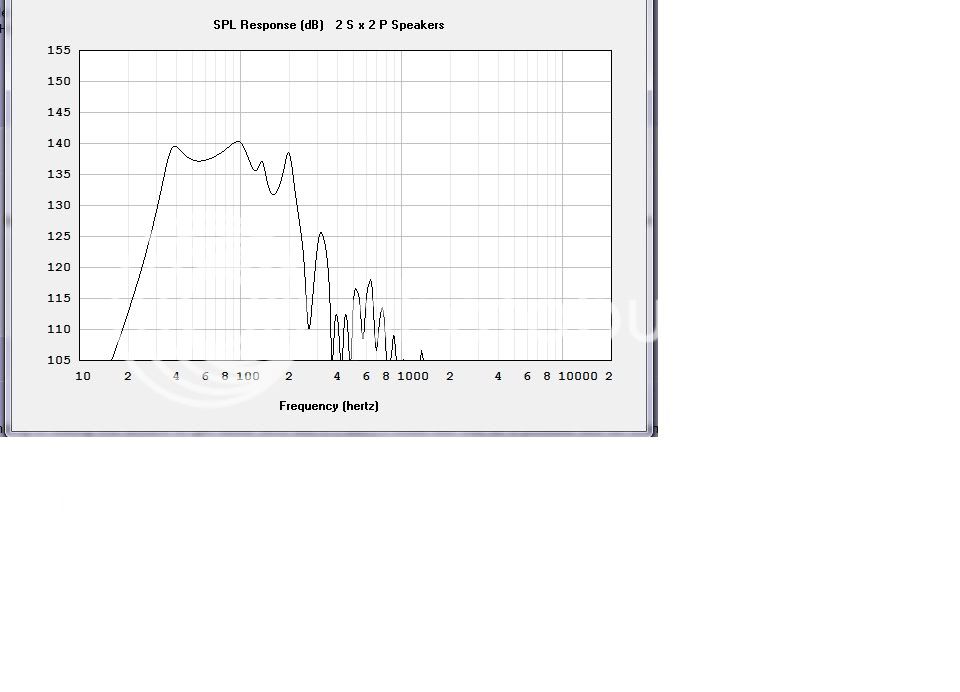Hi m R g S r,
It might do that, e.g.: http://www.diyaudio.com/forums/subwoofers/190635-th-18-flat-35hz-xoc1s-design-102.html, Post #1020, but take a look at Djim's last sentence there. Anyway, that's the thread with all the discussions.
Regards,
It might do that, e.g.: http://www.diyaudio.com/forums/subwoofers/190635-th-18-flat-35hz-xoc1s-design-102.html, Post #1020, but take a look at Djim's last sentence there. Anyway, that's the thread with all the discussions.
Regards,
Hi m R g S r,
Post #102: "...only the S shaped correction plate helps with uneven forces on the cone then..."
It looks like all the methods discussed (especially by djim http://www.diyaudio.com/forums/subwoofers/190635-th-18-flat-35hz-xoc1s-design-85.html , and even going back to screamersusa's fury horn http://www.diyaudio.com/forums/subwoofers/131852-live-sound-specific-tapped-horn-thread.html ) would help, but it will take actual physical experiments to find out how much. I don't think you can get there without building and measuring (and at the limits this is not a trivial excercise).
Regards,
Post #102: "...only the S shaped correction plate helps with uneven forces on the cone then..."
It looks like all the methods discussed (especially by djim http://www.diyaudio.com/forums/subwoofers/190635-th-18-flat-35hz-xoc1s-design-85.html , and even going back to screamersusa's fury horn http://www.diyaudio.com/forums/subwoofers/131852-live-sound-specific-tapped-horn-thread.html ) would help, but it will take actual physical experiments to find out how much. I don't think you can get there without building and measuring (and at the limits this is not a trivial excercise).
Regards,
Hi phivates,
Post #103: "...the throat of a TH is tapered, while the LAB 12 throat is not...".
The space between the drivers (LAB 12) would be the throat chamber, and after that you would get to the horn, and it is tapered. The throat is just the smallest section of the horn, attaching the driver coupling chamber to the horn.
Regards,
Post #103: "...the throat of a TH is tapered, while the LAB 12 throat is not...".
The space between the drivers (LAB 12) would be the throat chamber, and after that you would get to the horn, and it is tapered. The throat is just the smallest section of the horn, attaching the driver coupling chamber to the horn.
Regards,
Cluster of four @ x-max, not bad i think.
It is worth to notice the size of this cab, it is actually small, about 30% smaller than TH-18 (Xoc1's design) and TH 115/TH 118 by Danley.

Dag
Intresting. How much output with single cab @ x-max? I might try your design!
Post #8 in C/E/X among others. I'm a carpenter not a mathematician so I'm asking a mechanical question: does a parallel or non expanding throat chamber compromise results compared to the tapered (not parallel) throat seen in most of these TH designs? As a mechanic, I want to see my device, the driver, well served load wise, so the wedge incorporated in most of these plans looks problematic. In other words, what is gained by loading the driver asymmetrically?
there are no pro's/con's to a straight or tapered throat,its just what you can sim or model.
if one makes the throat wider (paralel)then the actual horn ,it wil act more as a chamber.
a (bigger )chamber devides the pressure on the cone better,but also introduces a bigger dip just above the pasband.generaly speaking.
if you mean by asymmatric load,a non paralel throat path,threre are no pro''s/con's to paralel throat path.
if you mean ,an symatric th vs a normal th.
a normal th uses less wood for the same internal volume a aposed to a symetric model.
the uneven loading on the cone in a normal model "could" be a problem.
this is the advantage of a symetric model.
also the centered mouth could be prefered in the symetric model.
if you want a more even load on the driver ,you best use a chamber,or a bigger throat section
(both introducing a dip above pasband)or a symetric model.
if one makes the throat wider (paralel)then the actual horn ,it wil act more as a chamber.
a (bigger )chamber devides the pressure on the cone better,but also introduces a bigger dip just above the pasband.generaly speaking.
if you mean by asymmatric load,a non paralel throat path,threre are no pro''s/con's to paralel throat path.
if you mean ,an symatric th vs a normal th.
a normal th uses less wood for the same internal volume a aposed to a symetric model.
the uneven loading on the cone in a normal model "could" be a problem.
this is the advantage of a symetric model.
also the centered mouth could be prefered in the symetric model.
if you want a more even load on the driver ,you best use a chamber,or a bigger throat section
(both introducing a dip above pasband)or a symetric model.
Last edited:
@rademakers: Outer dimentions are 51 x 72 x 80cm. (20 x 28 x 31,5 inches for our English/Americans friends)
@Samuel Jayaraj: the number are there for you to simulate yourself in the begining of this tread.
I would not recomend 18LW2400 or any 18 inch woofer without streching the widh of the cabinet to 24 inches.
Meanwhile right now in Oslo:
An externally hosted image should be here but it was not working when we last tested it.
Dag
Off topic:
Dag,
I would love to know if your tops are synergy/unity horns are they DIY, if it is mind sharing the plans? Thank you!
Glev
Norway you know, bad wheather etc.
That's ok, soon there will be snow instead, much better acoustics, Scanidavia is the place to be this time of year right
- Status
- This old topic is closed. If you want to reopen this topic, contact a moderator using the "Report Post" button.
- Home
- Loudspeakers
- Subwoofers
- 40Hz TH
